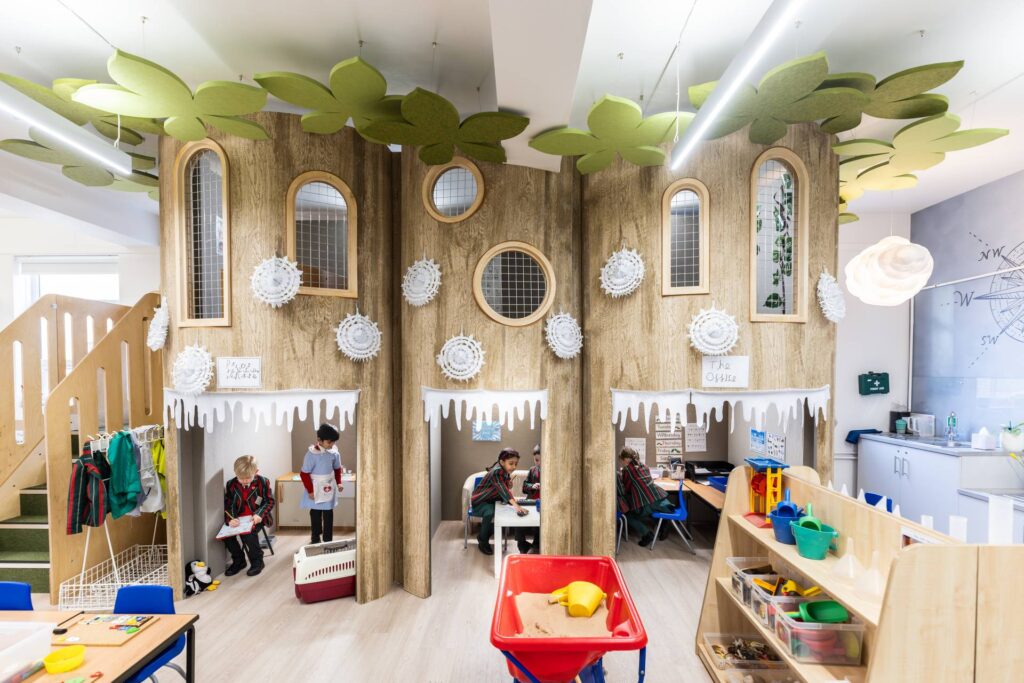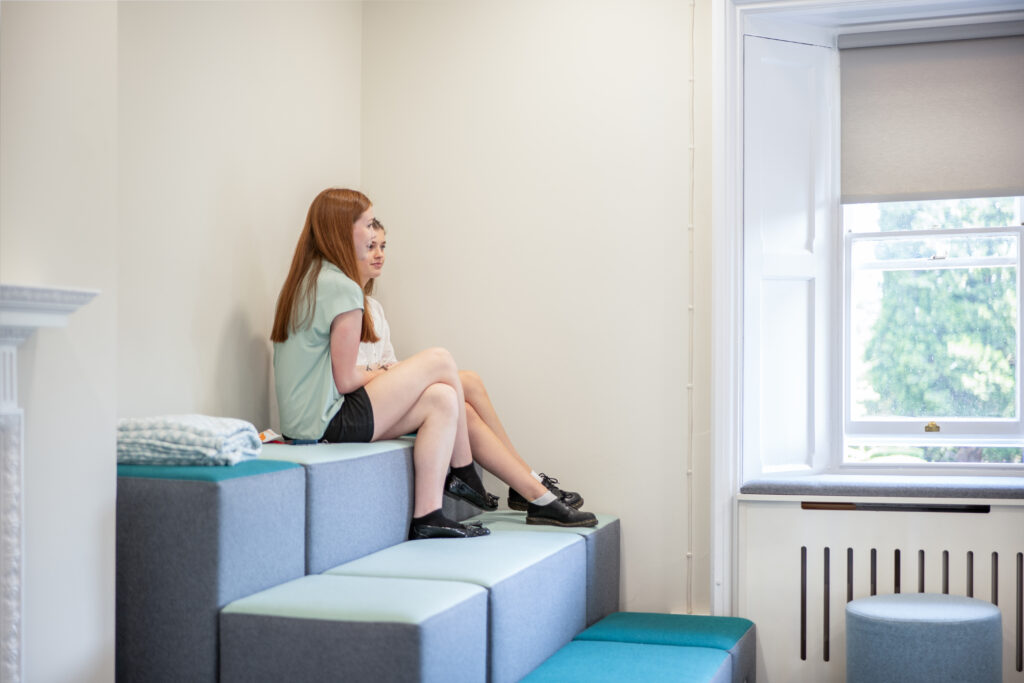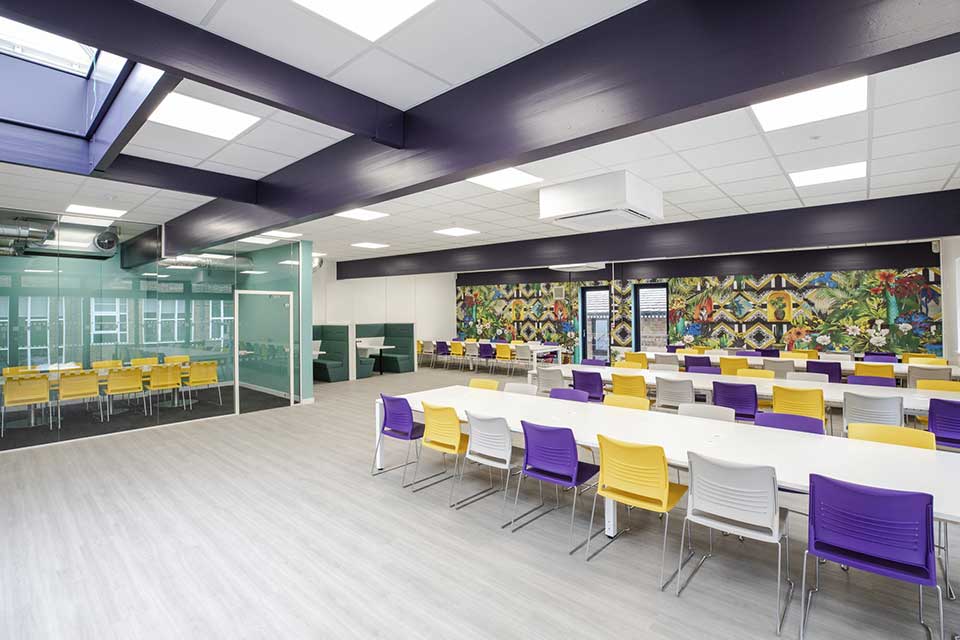The Silent Hero – How Does Acoustic Management Support Student Mental Health?

You can’t teach unhappy children. Unfortunately, rises in mental health issues are becoming increasingly common. Children are becoming increasingly unhappy. A poll of education professionals found that 76% had witnessed an increase in depression in their pupils, and 68% witnessed an increase in their pupils having sustained feelings of anger [1]. More than ever; we need ways to support and encourage students. Good acoustics is the silent hero supporting student mental health. But why? And how can you improve your classroom acoustics? Let’s find out!
Echoes of disruption
The pandemic. A disruptive force still echoing through society. This tale of two disruptive years has left a chasmic impression, especially on the younger generation. Studies have shown the alarming changes in teen brains during the unforgettable Covid lockdowns. Through the examination of MRI scans from 128 children, with half taken before and the other half after the initial year of the pandemic, scientists discovered an increase in the size of the hippocampus and amygdala. [2] These are regions of the brain that are responsible for managing memory retrieval and facilitating the regulation of emotions such as fear and stress. While these changes occur during typical adolescent development, the pandemic accelerated the process. The effect of the pandemic on children’s brain development has disrupted their path back to pre-pandemic life.
76% had witnessed an increase in depression in their pupils, and 68% witnessed an increase in their pupils having sustained feelings of anger.

Navigating the challenges
Some children have faced profound challenges in readjusting to normalcy during the transition from lockdown to the classroom. The abrupt shift from isolation to the bustling school environment has left many grappling with concentration issues, diminished confidence, and a lack of motivation. The adverse effects stemming from the prolonged absence of socialisation have cast a shadow over their emotional well-being. Overwhelmed by the sudden influx of stimuli, some students find it challenging to focus, resulting in heightened stress and anxiety. Due to interrupted education, learning gaps contribute to decreased confidence, compounding the struggle to engage with academic material. Moreover, the regression of social skills further complicates their attempts to connect with peers, exacerbating feelings of isolation. Returning to routine has become a formidable task for children, reflected in a 7.5% rise in absenteeism [3]. Underscoring the critical importance of addressing the multifaceted challenges they continue to face after lockdown.

Bring back the joy of learning
So, how can we support students? How can we bring joy back to learning and encourage children to be happier and more motivated? The environment we surround ourselves with can directly impact behaviours, attitudes, and mental health. Research connecting environments and behaviour is growing exponentially. In a lot of cases, young people are products of their environment. The combination of design thinking and neuroscience allows for creating learning environments that foster safety, comfort, healthy relationships, and intrinsic motivation. Luckily, you have 100% control over your environment. But how can you make it work to your advantage?
When spaces fail to accommodate sound effectively, it results in frustration among students, causing stress and miscommunications.

The silent hero
Sound is powerful. Physiologically, as our body is over 60% water, we become an ideal vessel for sound to travel through. It’s not surprising that sound has such an impact on us. Research has shown that, when optimised, the acoustics of educational spaces can support learning and mental well-being[4]. Whether students are walking through corridors, filing into an assembly hall, or collaborating in a classroom, they will feel the effect of acoustics. But why does it matter?

Acoustics in learning spaces
Good acoustics are pivotal in various human environments, particularly in
educational settings. Poor acoustical design goes beyond mere noise disruption. It influences the learning process, speech perception, student behaviour, and overall academic outcomes . When spaces fail to accommodate sound effectively, it results in frustration among students, causing stress and miscommunications. Young individuals with developing brains are particularly vulnerable to stressors, identified as a critical mechanism in persistent antisocial behaviour [5]. A study found that highly stressed children experiencing elevated cortisol levels due to conflicts were more likely to engage in antisocial behaviours.
Physiologically, as our body is over 60% water, we become an ideal vessel for sound to travel through. It's not surprising that sound has such an impact on us
Moreover, the science behind the impact of acoustics on humans reveals that noise triggers a stress response in the amygdala, a region of the brainstem that learns over time what sounds may signal impending danger. Poor acoustics cause the amygdala to release cortisol, impacting not only mental health and behaviour but also academic performance, as cortisol levels rise involuntarily, leading to a startled reaction. This intricate connection underscores the importance of creating environments with optimal acoustics to foster overall well-being, effective communication, and positive educational outcomes.

Mastering acoustics
So, how can you manage acoustics more effectively? When a room lacks materials that diffuse or absorb sound, acoustical issues arise. Hard surfaces are one of the most common sources of echo. When a sound wave encounters a rigid material, it reflects into the room, making it challenging to hear correctly. This stunts collaboration and may contribute to further feelings of detachment in students. Therefore, it is essential to note bare floors, empty walls, wooden or metal furniture, and uncovered windows. Echoing or reverberation are tell-tale signs of poor acoustics. Soft materials can reduce both issues. This could be in the shape of cushioned furniture, fabric curtains, and foam panels. Even paintings hanging on the wall can help. The best way to stop sound waves from bouncing around the room is to introduce objects that can absorb them on impact.

A sound investment
Acoustic management is a sound investment, transcending the realm of mere noise control. As we navigate the aftermath of the pandemic and witness the profound impact on the emotional well-being of our youth, the importance of strategically designed learning environments becomes increasingly evident. Let us recognise the transformative potential of acoustics: the silent hero. Let’s use it to our advantage and create spaces where young minds grow and thrive.









Leave a Reply